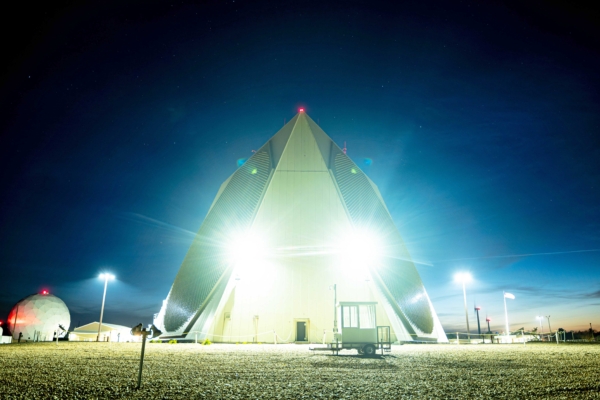The United States Indo-Pacific Command’s Space Force commander, Major General Anthony Mastalir, stated that the Chinese Communist Party (CCP) has invested heavily in long-range attack capabilities, aiming to deter the U.S. military beyond the Second Island Chain. As a result, the Space Force is working diligently to identify vulnerabilities in the CCP’s kill chain to prevent conflicts from arising.
Mastalir emphasized during a discussion at the Mitchell Institute for Aerospace Studies on Tuesday (October 22) that the CCP is establishing a formidable arsenal of long-range precision strike weapons specifically targeting the United States and its allies. They are seeking to deter the U.S. military beyond the Second Island Chain and even further.
“These capabilities, many of which are space-dependent,” Mastalir said. “If one wants to project power globally, space is a critical enabler, which the U.S. has known for decades.” He continued, stating that understanding how the kill chain is formed and how China (CCP) connects the kill chain is the first step in disrupting it, something they study every day.
The kill chain, also known as the attack chain, refers to the military process of a force’s attack, including target identification, deployment of forces, decision making and ordering of attacks, and target destruction. Disrupting the enemy’s kill chain involves defensive or preemptive measures.
“In reality, to project power over long distances, it’s difficult to link the kill chain without space capabilities,” Mastalir explained, underscoring the necessity of space superiority. He stressed that during competition and crisis, the Space Force must ensure that ground troops can utilize space capabilities and defend against anti-satellite weapon attacks.
“When we examine the CCP’s kill chain and its reliance on space, the Space Force has a responsibility to stand shoulder to shoulder with joint forces, allies, and partners to protect joint forces from space attacks,” Mastalir said.
Established in Hawaii on November 22, 2022, the U.S. Indo-Pacific Command’s Space Force is tasked with establishing partnerships with joint forces and regional allies to plan and execute space operations throughout the region.
Mastalir highlighted that the demand for space personnel is continuously increasing within the force. He noted that all joint forces quickly realize the importance of including a Space Force member in planning teams when developing strategies, and this need signals an ongoing increase with the involvement of allies and partners.
The U.S. Space Force is the smallest military branch with fewer than 10,000 personnel, accounting for only about 3% of the defense budget. Mastalir mentioned that the command currently has a branch in South Korea and plans to launch a second branch in Japan by the end of 2024.
He also added that their cooperation with Australia is “very, very close.”
“Our partners and allies are at different positions in their (military space) journeys, and we can engage with them separately and lead them forward together,” Mastalir said.
He noted that both Japan and South Korea have plans for “actively developing military space operations.” The U.S., U.K., and Australia have reached a consensus to enhance deep-space advanced radar capabilities, with the Australian deep-space advanced radar facility expected to be operational by 2026.
Mastalir expects Japan and South Korea to “adhere” to installing similar space surveillance systems domestically.
While enhancing the space capabilities of Indo-Pacific allies, the command is attempting to transform bilateral exercises into multilateral participation.
“One of the focal points is shifting from numerous bilateral engagements and exercises to more multilateral activities,” Mastalir mentioned.
“Showing our readiness to engage in war daily with allies and partners and emerge victorious when necessary is indeed the best way to prevent war,” he stated.
Mastalir also pointed out increased cooperation between China, Russia, and North Korea.
“There is evidence of cooperation that we have never seen before,” he mentioned. “This is very concerning.”
Their cooperation has altered the dynamics of potential conflicts and blurred the lines where conflicts might arise. “People tend to look at potential conflicts in isolation, and how we are going to operate,” Mastalir said.
However, since Russia’s invasion of Ukraine, military and economic cooperation among China, North Korea, and Russia has intensified. This has changed how the United States and its allies view their competitors.

